NYC Comptroller Scott Stringer brought his traveling Sandy Oversight show to the auditorium of PS 15 Tuesday evening.
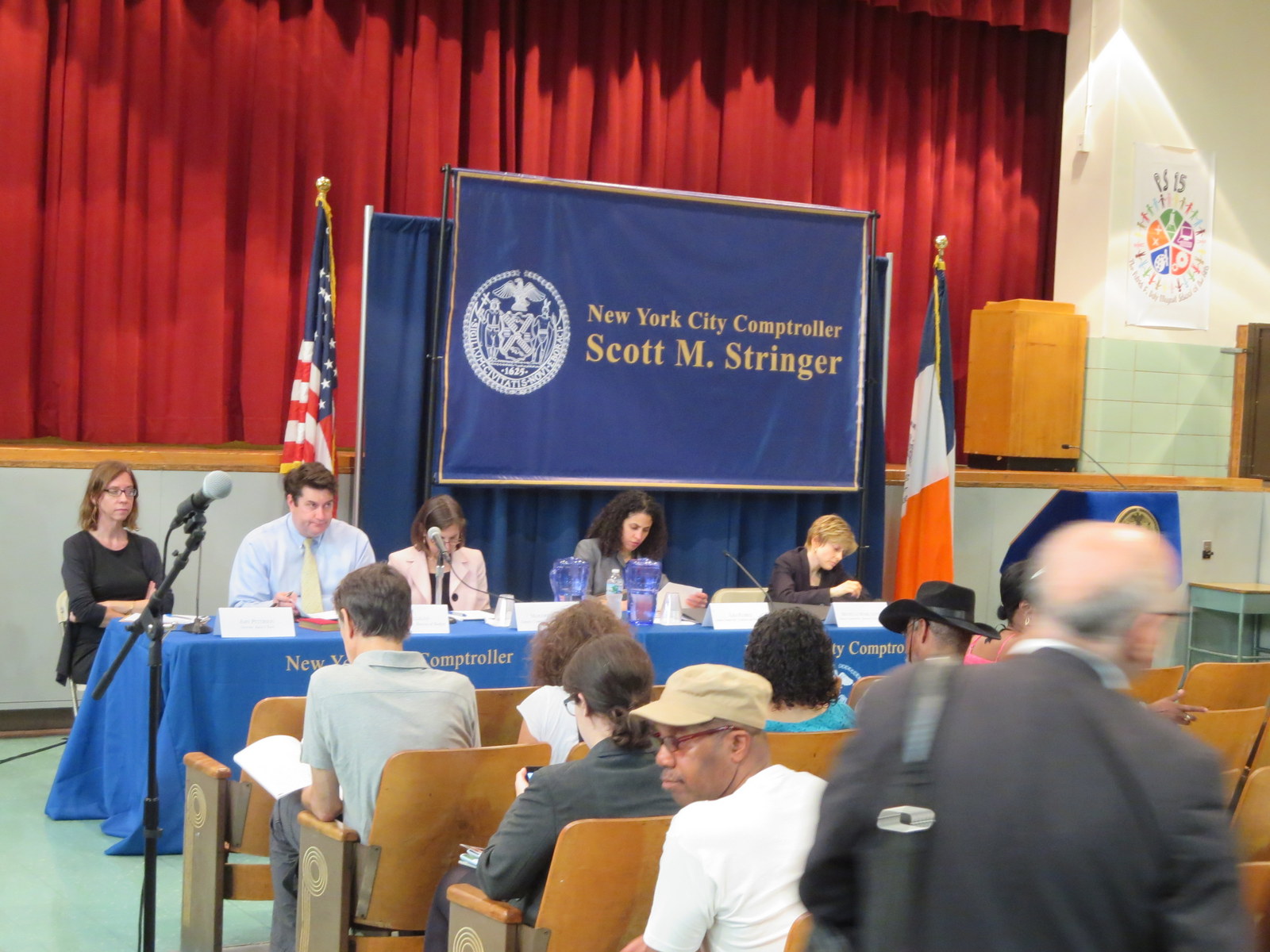
Flanked by three of his deputies, by Councilman Carlos Menchaca and by the Mayor’s director of Housing Recovery, Amy Peterson, Stringer announced that he was in Red Hook to listen. This was not to be a normal feel-good town meeting Two lines were set up for people to tell their Sandy stories. Stringer vowed that everyone who spoke would get a follow up call the next morning. He said that for each person who wasn’t called, someone in his office would lose their job. Solutions would be found.
The biggest complaints of the night came from homeowners and businesses being overwhelmed by the lengthy Build-it-Back application process, and from NYCHA residents who are to this day suffering from mold and polluted air causing them various sicknesses including asthma.
Build-It-Back is NYC’s housing recovery program that was created to help distribute Federal relief funds. It has been severely criticized as thus far only ten houses are being worked on – out of thousands of applicants. It’s publicized failures prompted the Comptroller’s oversight campaign.
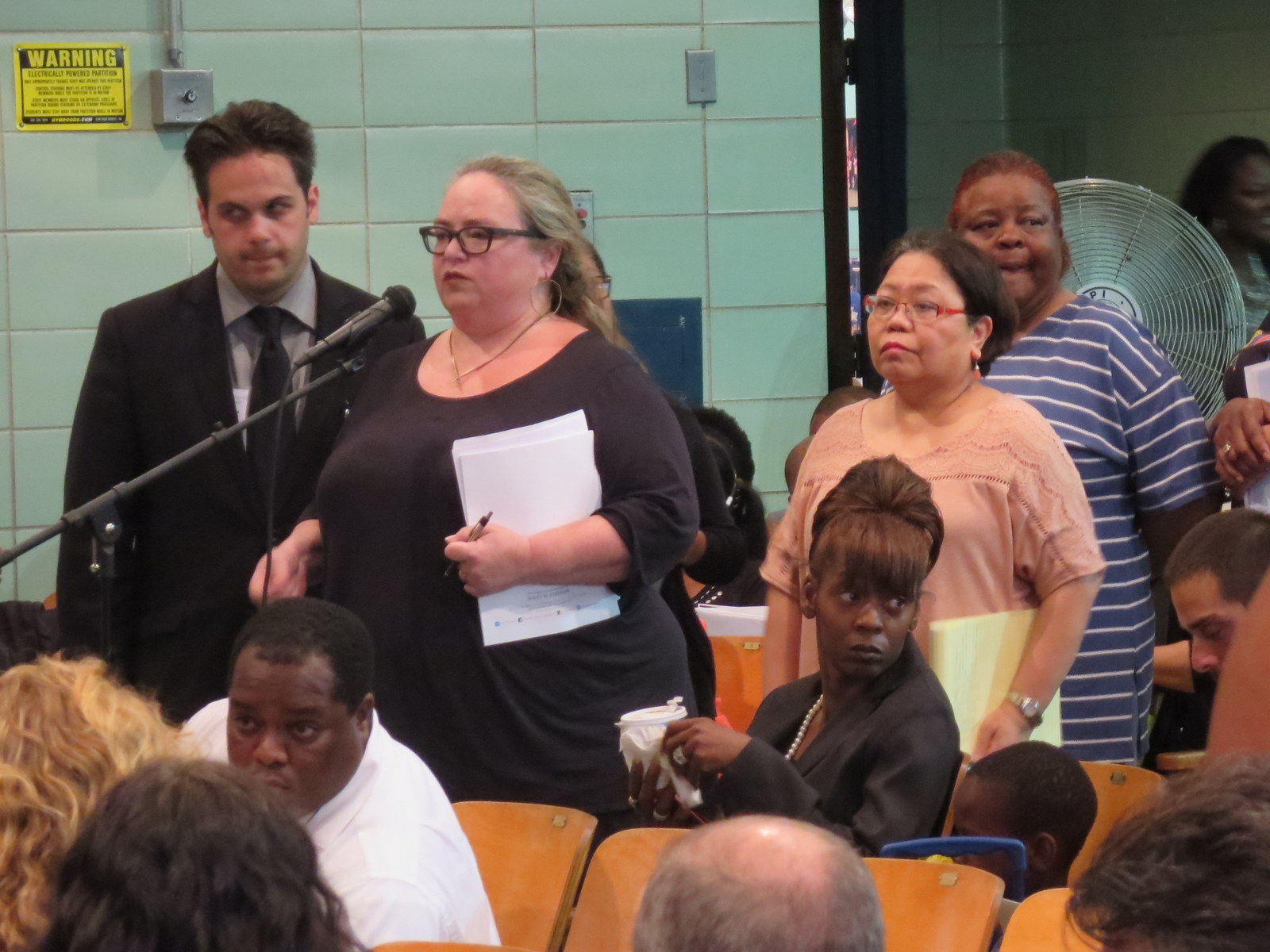
Monica Byrne was first in line to speak. She introduced herself as a founder of ReStore Red Hook. She called it the only organization that was 100% staffed by volunteers, giving grants totaling $600,000 to businesses such as hers. The grants were in the form of a series of checks mailed to 51 Red Hook businesses, helping them to stay open.
She spoke of a number of problems. First of all, SBA money were loans, and nobody wanted to take on more debt. Grant programs such as Build-It-Back required documentation of losses. She said that small businesses don’t always keep receipts of their purchases, and anyway, much paperwork was lost in the flood anyway. “The problem is in the application process,” she said. She also said that relief money should go directly to those that need it, not to programs. She did not name any specific programs.
Vilma Heremia, representing the Carroll Gardens Association (CGA), told of losses to the 106 low-income homes they manage in Red Hook. “We had to change boilers and do mold remediation,” she said. CGA had to spend $1.1 million to remediate the Sandy damage. They have been able to raise a half million from private sources, and is hoping that Build-It-Back would fund much of the rest, which has come from their operating accounts. “So far it’s been a big runaround,” she said.
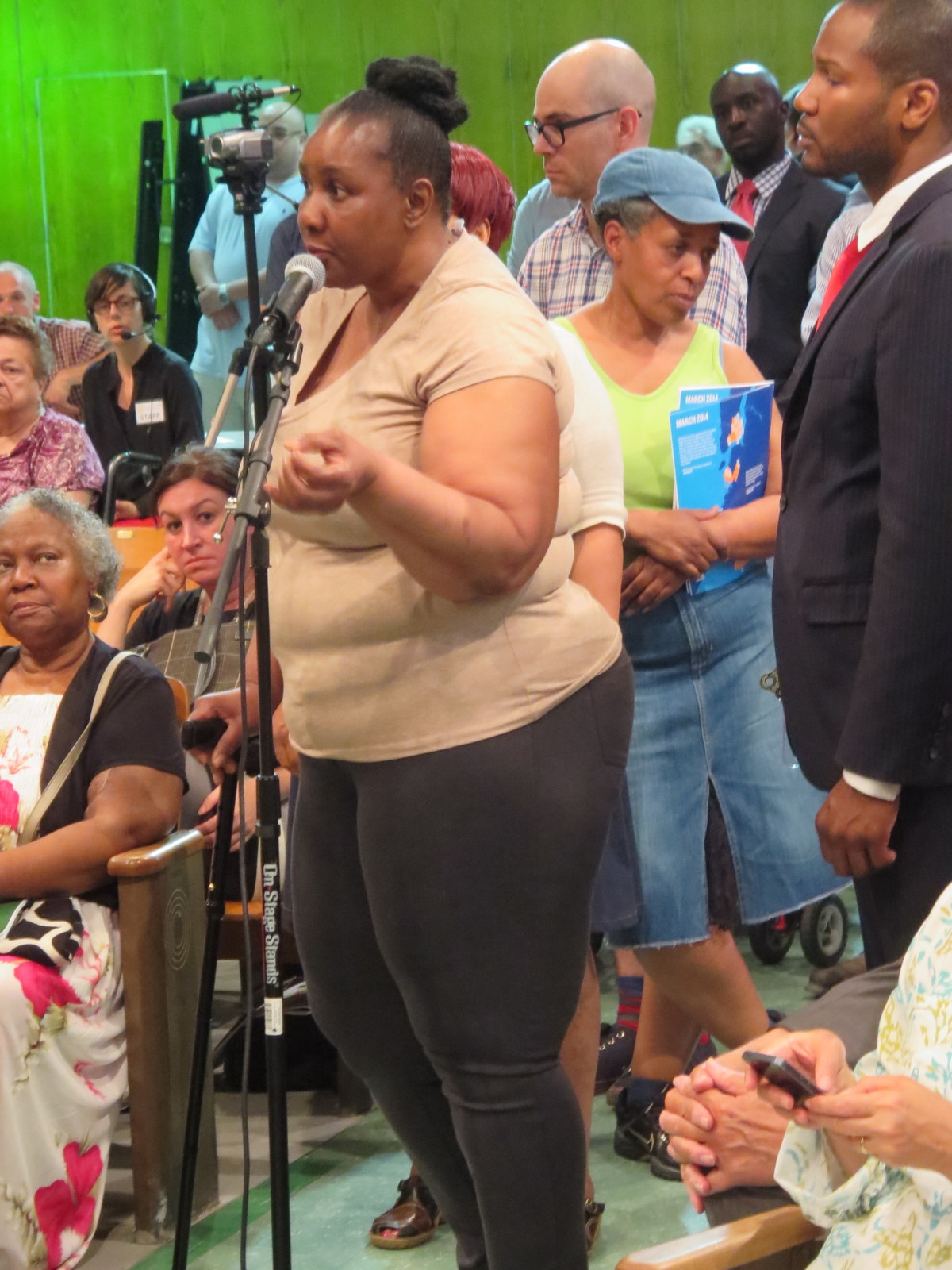
Barbara, a resident of 80 Dwight Street, complained of black soot coming into her windows from the diesel powered temporary boilers that have been providing heat and hot water since the storm. “It’s making people sick,” she said.
Stringer interjected to say that the first audit his office took on was one of NYCHA, which is ongoing.
Another NYCHA resident, Carol Mass, explained that her daughter’s asthma has been getting worse and worse, she has to use a pump much of the time. She attributed it to the soot and to mold, but when NYCHA workers show up, they “do nothing.”
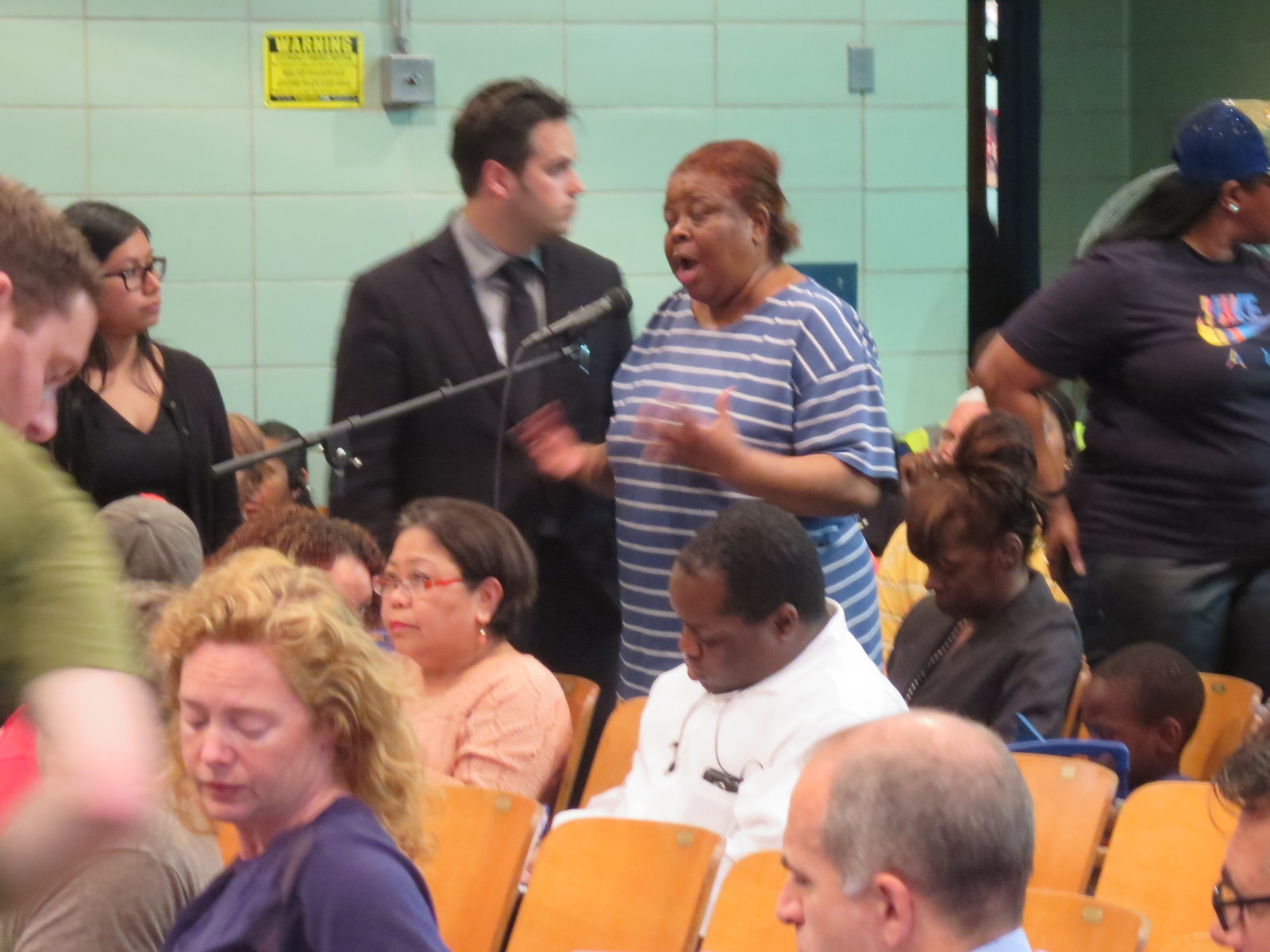
The Fifth Avenue Committee sent a slew of representatives to speak. They had suggestions for Stringer, and also seemed to be requesting a partnership with Build-It-Back to facilitate the process. One of their suggestions was that the Build-It-Back contractors be taught resiliency planning as well as simple rebuilding.
Mary Kyle, from Van Brunt’s Dry Dock Wine and Spirits, found her element in the audience. She regaled them, saying that having to appear before Build-It-Back was like a trip to visit the great OZ – all smoke and no action. She almost broke into tears, saying that the alienation she feels from the city has been crippling. She was speaking both as a homeowner and business owner. “We need money – not cups of pudding!” was how she characterized the Sandy aid that she perceived since the storm.
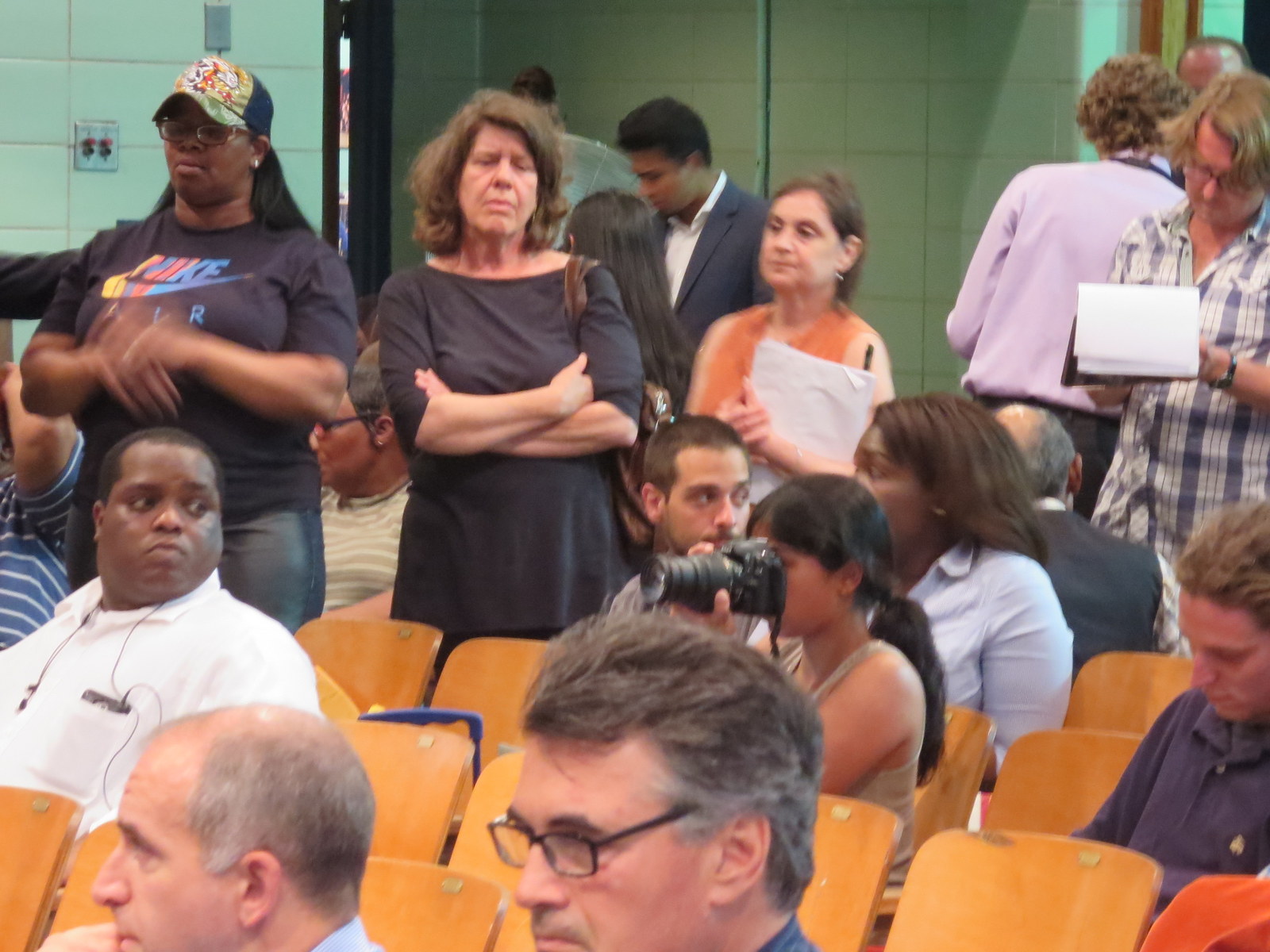
Stringer asked her what government organizations she was referring to, specifically. Mary thought a second and mentioned SBA, FEMA, her insurance company, Build-It-Back and Red Hook Rising. “I got bupkus!” she said.
A Red Hook resident who is restoring her 1899 family home also complained about the enormous amounts of paperwork she has had to wade through. She has been able to move forward, and complimented local community organizations – specifically Red Hook Initiative, the Red Hook Volunteers, Rebuilding Together and the Good Shepherd Services. They have been “out of this world,” she said to applause. She suggested that these people be put to do the rest of the work.
Adam Armstrong, who led a campaign against diesel pollution from the Cruise Terminal, said that he felt for the people in the Houses suffering from the temporary generators. He said that he needed to fill the gap between what his insurance company paid to repair damage to his two family house, and what he has had to spend. Thus far he has been unsuccessful at getting this money. He declined an SBA application because “it’s a loan.”
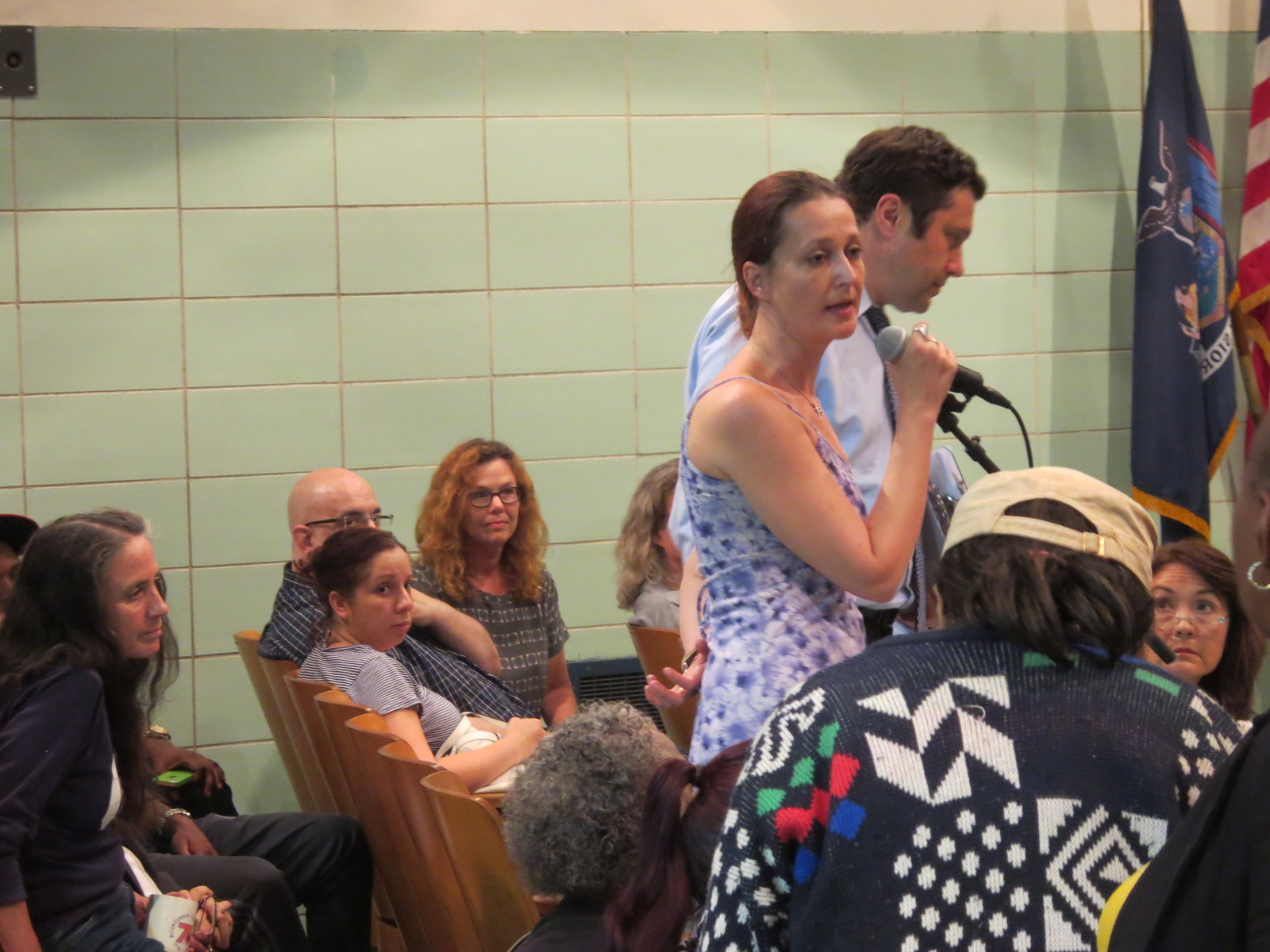
Carlos Menchaca spoke close to the end of the long evening, recalling the storm and the government response. We needed to do better and we will is what he said. At the time of the storm he represented City Council Speaker Christine Quinn in Red Hook, and got a first-hand look at the situation. Now he runs the 38th District.
He announced some upcoming meetings – a June 25th meeting back at PS 15 with Build It Back and a Long-Term Recovery Plan meeting June 12th at the Miccio Center. He closed by saying that the most important way to get government working for the people is for the people to show up. “We need community voices to speak up,” he said.
The community did a pretty good job this evening in front of the Comptroller.
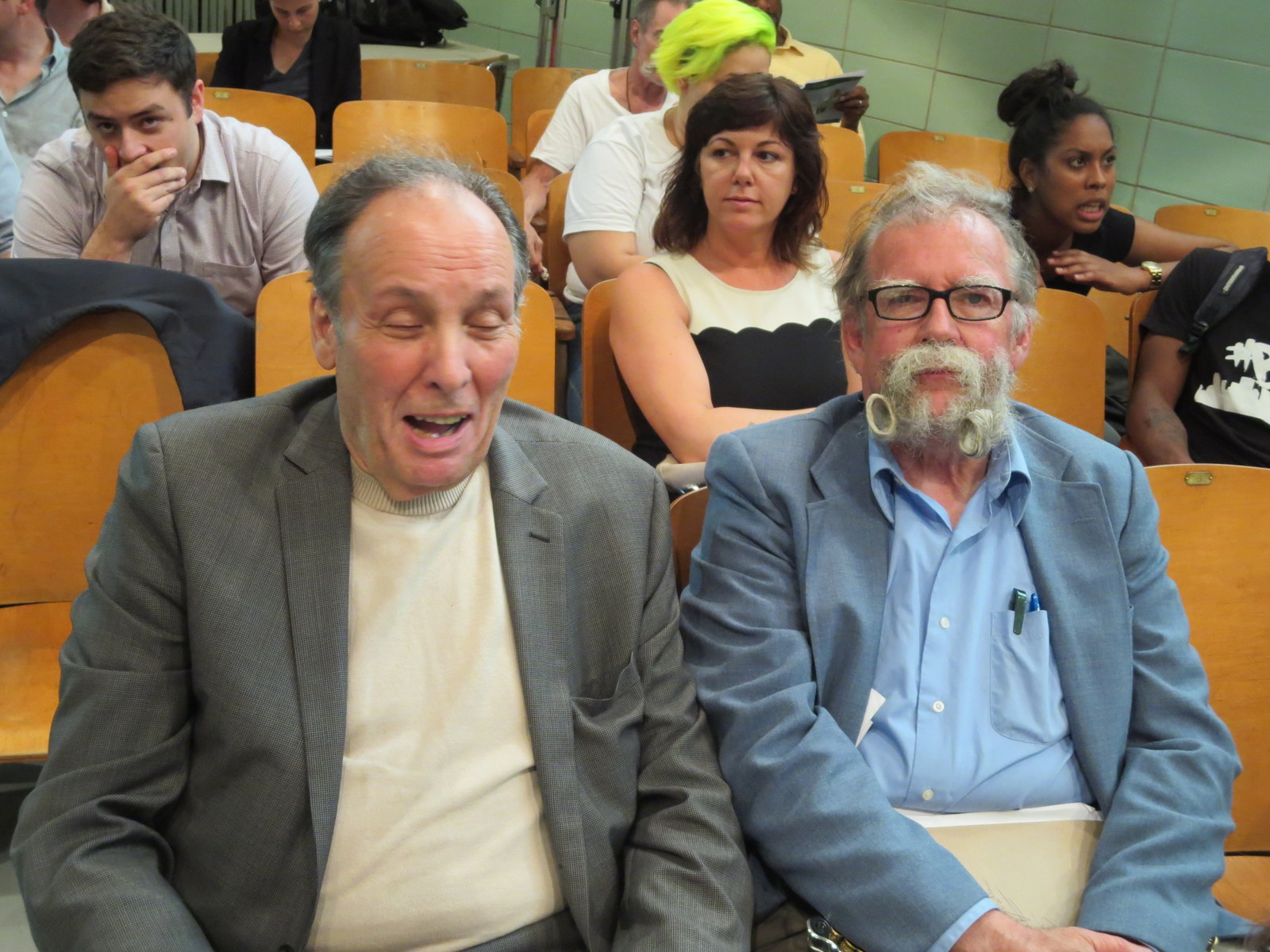
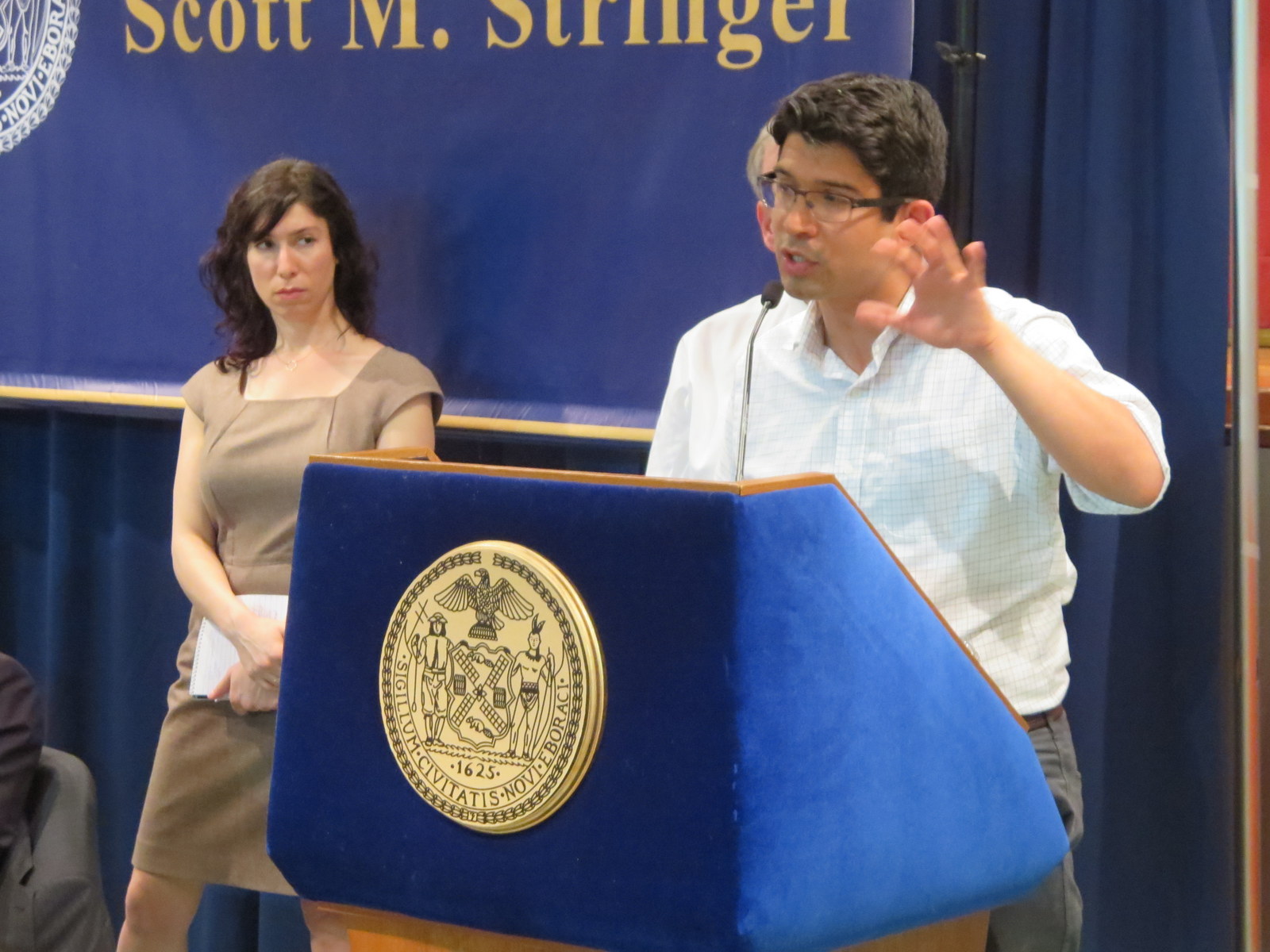
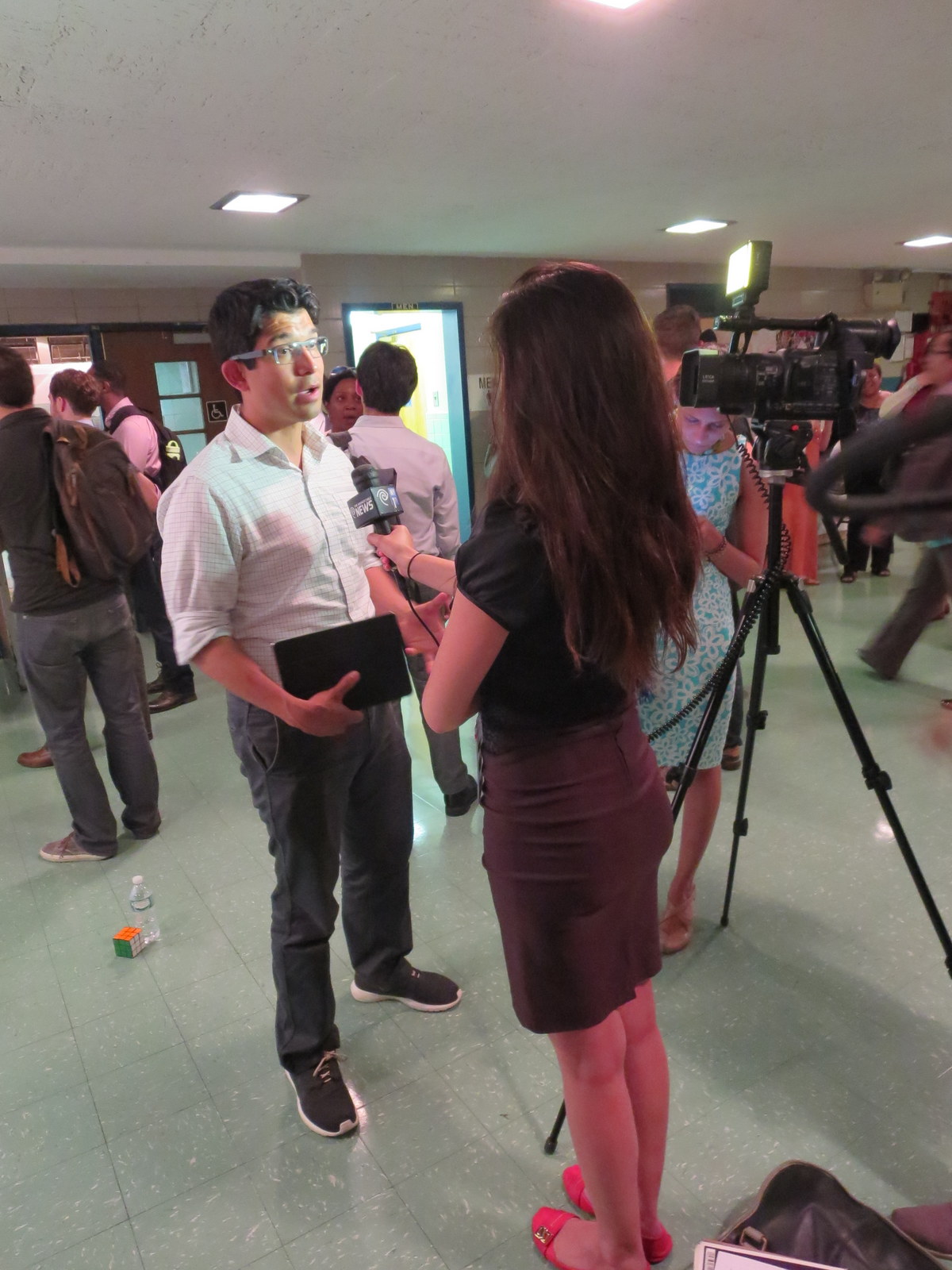
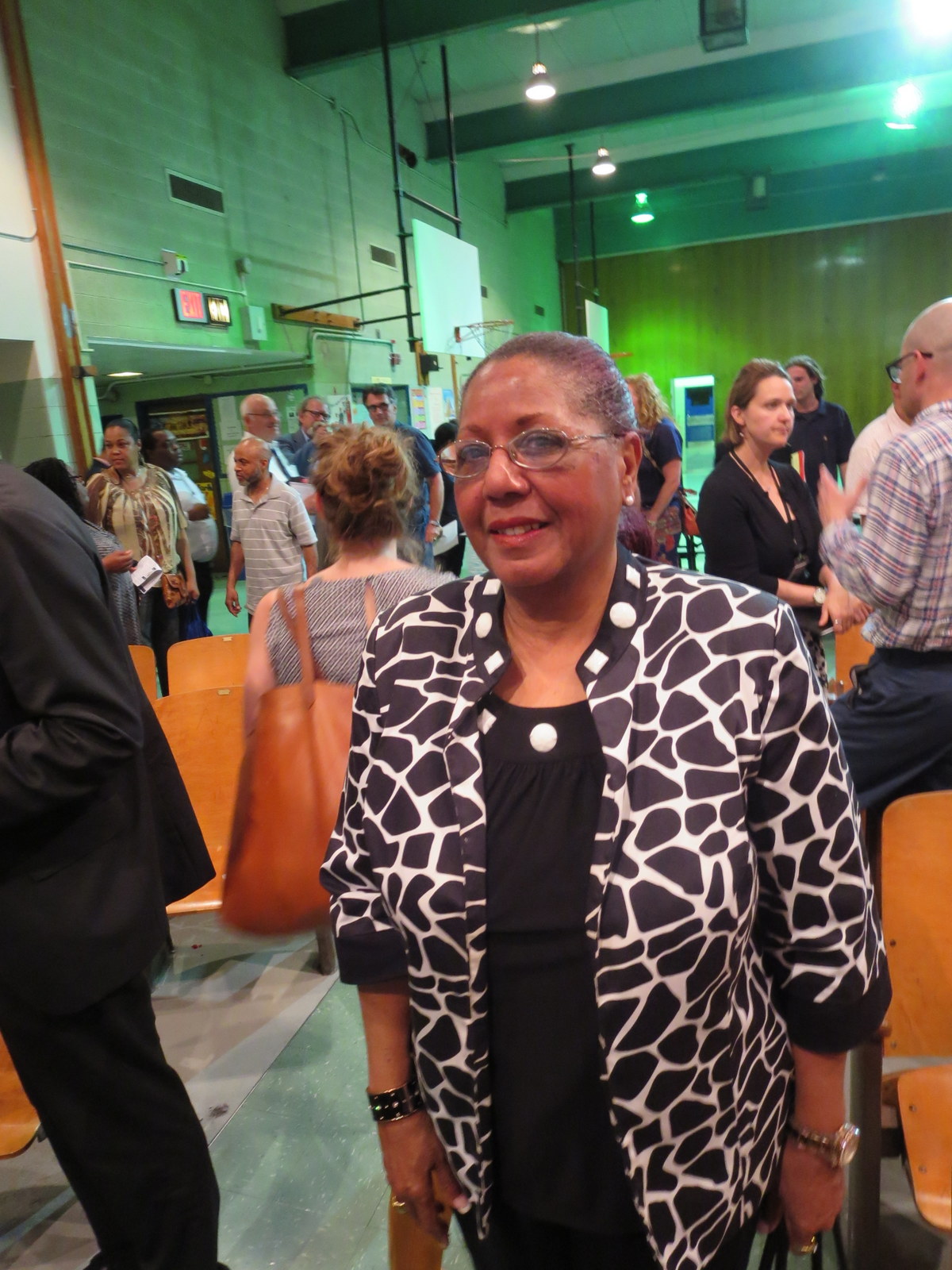









2 Comments
It’s interesting that the same issues keep coming up regardless of location. Be it Red Hook, the Rockaways, or Coney Island.
I agree and think that local community organizations would do a better job getting things done and as stewards of aid.
I wrote this after the Coney Island meeting. http://charlenengamwajasat.wordpress.com/2014/05/13/ideas-for-re-building-southern-brooklyn-after-sandy/
It’s crazy that only 500/20,000 people have been helped in about 2 years. That is a 97.5% failure rate & hundreds of millions of dollars spent.
Thanks for the writeup & keeping this issue on people’s radars.
Pingback: Media Rundown: Brooklyn in the News (06.12.14) : Brooklyn Brief